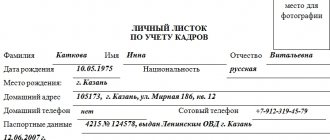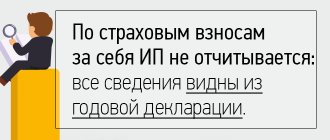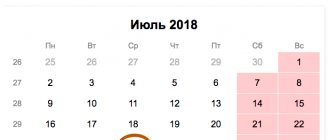SZV-M is a mandatory reporting form approved back in the first quarter of 2020 for any employers, excluding individual entrepreneurs who do not have employees. SZV-M must be submitted to the Pension Fund of Russia every month, starting from April of last year.
SZV-M means “Incoming information about the insured”, monthly report (M). This refers to information about persons to whom the insurance part of the pension is calculated. This information is “incoming” for the Pension Fund; for the enterprise, on the contrary, it is outgoing.
The form consists of four sections. This:
- Details of the policyholder, i.e. name of the enterprise, its registration number in the Pension Fund of Russia, checkpoint numbers and tax identification number.
- Reporting period - it is a calendar month.
- Report form type. It can be initial (not to be confused with outgoing), complementary or canceling.
- Information about the insured persons, that is, employees. Main section of the report.
The main section includes data on all employees, including those drawn up under traditional labor contracts, civil contract agreements, copyright, publishing or other agreements, according to which one person, having completed (officially) any intellectual or physical task, received money for it - it doesn’t matter , be it a regular salary or a one-time author's or license fee.
Filling out the first two sections rarely raises questions for the person authorized to do so (this could be an accountant or a human resources officer, or any other person decided by the manager), but when it comes to the type of reporting form, many people have questions about when and which form to use.
Forms
There are three of them in total, marked with an abbreviated letter designation: “iskhd” - original, “add” - supplementary, “cancel” - canceling.
The first, initial form usually does not raise questions. It is included in the report by default when it is prepared for standard reporting to the Pension Fund for the first time during the reporting period. Such a report must contain information about all employees, including temporary or seasonal workers, who worked for the benefit of the enterprise during the reporting period and received remuneration for this.
But if an error has crept into the reporting - they forgot about a new employee hired, an old one fired, someone changed their last name in a month, or an authorized employee simply made a typo in someone’s personal data, then timely adjustments must be made to the report. This is what the complementary and canceling forms are intended for.
Canceling
It is marked in the third section of the report with a special code “cancel”.
It is applied if the original form accidentally, due to the accounting department’s failure to receive data in a timely manner, someone’s negligence or forgetfulness, included data on employees who were fired before the start of the reporting month. Its purpose is to exclude from the Pension Fund database information about these persons who worked in a given place. Let’s say an organization submitted a SZV-M report with the code “output” in the month of August. The report contains information about employees for the month of July. But it was accidentally hit by mechanic Sidorov, who was fired on June 30. In this case, before the deadline for submitting reports, the organization must submit a new report with the code “cancel”, containing data about the only employee - Sidorov (full name, SNILS number and TIN, if any). Information about it will be deleted from the Pension Fund of Russia database concerning this enterprise.
In case of erroneous entry of data, in order to correct it, it is necessary to submit two reports - one canceling, the other filling. Let's consider an example: the organization has a manager, Tatiana Petrova (according to her passport). She was included in the report as Tatyana Petrova. From a legal point of view, this is classified as providing knowingly false information. In this case, in order to avoid penalties, a report is sent to the Pension Fund with the code “cancel” for Tatyana Petrova and followed by the next one, with the code “additional” for Tatyana Petrova.
Complementary
In other cases, a supplementary form is used if in the reporting period, after submitting the main report, a new employee was hired, or one of the old ones was not included in the original report due to insufficient data (the most common case is that the employee did not provide HR department SNILS) or for any other reason.
This form is submitted only to those employees who are actually registered at the enterprise, but were “forgotten” for some reason. The supplementary form is issued, among other things, to employees who:
- are on leave with or without pay;
- are on maternity leave (women) or on long-term maternity leave;
- went on sick leave;
- sent on a business trip.
From the point of view of the law, all of them, even while on leave without pay, are employees of the enterprise. In addition, SZV-M in the “additional” form is also submitted to the general director, including if he is the only founder of the organization - since he also has the right to the insurance part of the pension.
Also, as given in the example above, the supplementary form is used in all cases when it is necessary to correct any erroneous data, including full name, SNILS number and TIN.
Almost all three forms do not differ from each other in any way, except for the code. They are handed over on the same forms.
The employee has improved his qualifications
Question : In December 2020, Vladimir Sidorov improved his qualifications, but he has not had any personnel events since the beginning of 2020. On July 10, 2020, he decided that he did not want to give up keeping paperwork and submitted a corresponding application. What needs to be indicated in the SZV-TD form?
Answer : In this case, in the SZV-TD form for July, you need to indicate the date of filing the application in the line “An application to continue maintaining the work book has been submitted.” The form also needs to reflect the assignment of a new qualification, since this information about Vladimir is being presented for the first time. To do this, fill out the line about the last personnel event as of January 1, 2020 and indicate ESTABLISHMENT (ASSIGNMENT) there. However, the Ministry of Labor explains that the SZV-TD needs to reflect only the qualifications assigned by the employer himself. This means that if Vladimir Sidorov had received additional education not at his place of work, then this information would not have been included in the SZV-TD report (Letter of the Ministry of Labor of Russia dated 03/05/2020 No. 14-0/10/B-1703).
https://youtu.be/sZlWlGTbA2c
Deadlines for filing adjustments
The usual deadline for submitting the original SZV-M form is before the 10th day of the month following the reporting month.
In some cases - until the 12th, if there are public holidays at the beginning of the month (May, November, and so on). The schedule changes annually according to the calendar. There are no deadlines for submitting corrective forms. Theoretically, they can be submitted at any time, but in practice, the enterprise is punishable by penalties for late submission or provision of incorrect information about any employee.
That is, to put it simply, you can submit a report for the current month, for example, June, at the end of June, but if any personnel changes occur, you will have very little time left to correct the data. If information is delayed, a fine will be charged. In addition, according to Article 17 No. 27-FZ of April 1, 1996, the very provision of incomplete/inaccurate data is punishable by a fine.
Legally, the very fact of submitting a corrective (cancelling or supplementing) form can lead to a fine, because in fact, the organization admits to submitting false data.
Whether to apply sanctions policy in this case or not, each regional branch of the Pension Fund decides independently. No regulations indicate the situation when an enterprise independently discovers an error in a report and takes measures to correct it; accordingly, this remains for the consideration of officials of the local Pension Fund.
In some departments it is permissible to submit corrective reports before the deadline for submitting the main one, i.e. until the 10th of the next month. In all other cases, a fine automatically follows.
SZV-M: how to avoid getting fined when submitting clarifications
Many fellow accountants report that they were fined by the Pension Fund of the Russian Federation for submitting minor clarifications to timely submitted SZV-M forms.
The supervisory authority did not take into account any mitigating circumstances.
Has the approach of the Pension Fund of the Russian Federation to accepting the updated form of SZV-M recently changed? Some time ago, the central office of the Federal Tax Service made a sound conclusion that there is no point in arguing with taxpayers on issues that have already been answered unequivocally in arbitration practice.
One can understand the officials: why waste the working time of Federal Tax Service employees and money in obviously losing disputes with taxpayers? And the territorial tax authorities were instructed to take into account the established arbitration practice in each specific case. But the Pension Fund of the Russian Federation is clearly in no hurry to adopt this positive experience.
As a result, regulatory authorities, with tenacity worthy of better use, make decisions against insurance premium payers, which are overturned over and over again by courts at different levels.
We are, of course, talking about situations in which there is arbitration practice that is completely positive for payers. An example is the errors of the named payers in reports on the SZV-M form.
As we know, accountants have the impression that although it is presented monthly, it is not a very important report. Based on the results of its submission, no payments are made; it is for informational purposes only.
However, for errors made in it, a considerable fine is possible, directly proportional to their number: for each error - 500 rubles.
What is important is that even the submission of updated calculations does not save you from fines.
In this sense, the situation does not change. But another thing remains unchanged: if the payer goes to court, a decision is made in favor of the payer.
Let us illustrate this thesis using the example of one of the latest court decisions. We are talking about case No. A83-7961/2017.
The Crimean enterprise promptly submitted information about the insured persons in the SZV-M form for January 2020. The company discovered an error in this information concerning one of the insured persons, and in March of the same year submitted an updated report. Nevertheless, the regulatory authority held the payer accountable.
This is a typical situation: the payer himself identified an error in his report, the error did not lead to any arrears in payments, but this did not save him from a fine. I had to go to court, and it made a conclusion in favor of the payer - see.
Decision of the Arbitration Court of the Republic of Crimea dated December 18, 2017 on the named case.
The supervisory authority decided to insist that information about the insured persons was submitted untimely (meaning information about one insured person that was not in the initial report, but appeared in the clarifying one, submitted, indeed, beyond the established deadline. According to Article 17 of the Federal Law dated 04/01/1996 No. 27-FZ “On individual (personalized) registration in the compulsory pension insurance system” for failure to provide
Frequent decryption errors
This reporting can be submitted both in paper and electronic versions. The latter, naturally, causes less hassle and saves time, but when submitting it, you can receive a negative protocol from the Pension Fund, which means the document has not been accepted.
The most common errors when decoding the SZV-M report using the software method are the following codes:
- "50". This error code means that the program received incorrect data. Either the report file has an incorrect structure, or there is an error in the TIN of the reporting enterprise, or an incorrect electronic signature. If everything is correct, then the form code is incorrect - for example, it is impossible to submit two reports with the code “output”, primary, for the same reporting period. The second can only be “extra” or “oh.” This code means that the file contains some punctuation and other characters that interfere with its decryption. These include a double space, a space after a hyphen, a period after a surname, a hyphen after a full name.
- "thirty". This code indicates violations in filling out section 4. For example, zeros or a dash are entered in the TIN column, the personal data of employees does not correspond to the Pension Fund of Russia database or is simply indicated incorrectly (an error in the last name, number, etc.), column “No. /n" is filled out of ascending order. Also, the software package generates the “thirtieth” error when the checkpoint of the reporting organization is incorrectly specified.
- "20" and "10". These codes indicate minor punctuation errors.
The absence of information about the employee's TIN in the column is not considered an error; this column is filled in as such information becomes available. If the employee's TIN is unknown, simply leave the field blank.
The Pension Fund recommends checking the SZV-M report before submitting it using the CheckPFR program, which can be downloaded for free on the Pension Fund website.
An employee cannot carry out his activities by a court decision
Question : By a court verdict dated May 19, 2020, driver Ilya Ivanov was deprived of the right to engage in this type of activity for one and a half years. During the ban, the employer temporarily transferred him to another position. What needs to be reflected in the SZV-TD form?
Answer : Previously, the employer did not need to reflect a temporary transfer to another position; only the event (BAN TO OCCUPY A POSITION (TYPE OF ACTIVITY)) and the period of the ban were indicated. However, the Ministry of Labor recently issued clarifications (Letter of the Ministry of Labor of Russia dated 03/05/2020 No. 14-0/10/B-1704). So, now information about the ban on holding a position must be included in the SZV-TD only if the employee resigns (clause 4, part 1, article 84 of the Labor Code of the Russian Federation). That is, information about Ilya Ivanov does not need to be included in the SZV-TD form for May.
Liability and fines
For violation of the deadlines for submitting SZV-M reports, as well as for submitting false and/or incomplete information, administrative liability is provided, implying a fine of 500 rubles for each employee and for each day of delay or until the information is corrected (if the Pension Fund of the Russian Federation noticed an error). In this case, the very fact of filing a corrective report can be regarded as confirmation of the filing of false data.
Example: the Forget-Me-Not organization, which employs 250 people, delayed the submission of the SZV-M report by 4 working days due to internal personnel changes. She could face a fine of up to 500,000 rubles. But if the same organization submitted a report for the main part of its employees in a timely manner, but after 4 working days (provided that the local branch of the Pension Fund of Russia allows for the submission of corrective reports within 10 days after the reporting period), it sent a canceling and supplementing report for two employees - the dismissed and accepted in return during the reporting period, the fine will be only 4,000 rubles.
Drawing up and submitting a new SZV-M form is included in this publication.
The employee got a part-time job
Question : Anna Kuznetsova got a part-time job on February 17, 2020. What must an employer indicate on the SZV-TD form?
Answer : In column 4 you need to indicate that Anna is a part-time worker. At the time she started a new job, all entries in her employment history were made by another employer. This means that “Vernisage” in the SZV-TD form for Anna must indicate information only about the February event - RECEPTION.
Staffing has changed
Question : Tatyana Smirnova was hired on August 15, 2020. However, on March 10, 2020, the staffing table changed: Tatyana’s position and her structural unit are now called differently. What needs to be reflected in the SZV-TD form?
Answer : Since this is Tatyana’s first personnel event in 2020, the form should reflect the last entry from the work book as of January 1, 2020 (this is a hire dated August 15, 2020). Changes in job titles and department names must be formalized as a TRANSLATION.
Got it? Test yourself - answer 6 tricky questions from our experts.
Elena Kulakova, expert of Kontur.Externa









